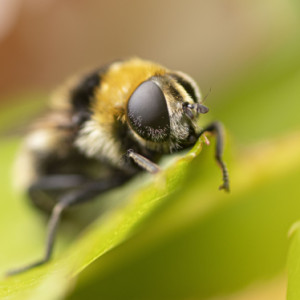Bee Mine?
A little bit earlier in the year a colony of Tree Bumblebees moved into a spare garden refuse bin that we have. They've only been in the UK since something like 2003, but they are gradually moving northwards. I don't believe they are a threat to local species, and so not seen as particularly invasive.
Anyway, they've been fascinating to watch. Basically the Queen finds a suitable spot, and the colony soon grows. According to the Bee Conservation Trust who I contacted about them, a typical colony will be 150-200 bees. They're not causing any issue, and are quite a docile bee generally, so there's no need to do anything about them other than observe.
One of the behaviours they exhibit is for certain males to hang about the entrance, and when a new Queen emerges to fly off to found her own colony, they pounce to mate. The males are much smaller than the Queens, but cling on as she desperately tries to fly off, the extra weight causing a number of ungainly crash landings into bushes and the like.
I watched one Queen with TWO males on her back. I don't think she took kindly to them, or the males were fighting between themselves, as both potential suitors ended up dead...
Come winter the Queen will vacate to hibernate, and as they don't usually return to the same nest each year, we can empty the bin and have a look at the nest they leave behind.
More flying insect weirdness today as I noticed on a shot of a Narcissus Bulb Fly (a type of Hoverfly, the Merodon equestris) that it has hairs growing through, or out of, its eyes.... (in the extras)
Less gruesome was a once-in-a-blue-moon appearance of a Greater Spotted Woodpecker on the telegraph pole. Happens maybe every 4 or 5 years, and she had a mate with her who called her away, but fortunately after I'd managed to swap lenses and, in less than perfect light, grab a couple of snaps. Garden Lockdown Wildlife Species count is up to 86....



Comments
Sign in or get an account to comment.


